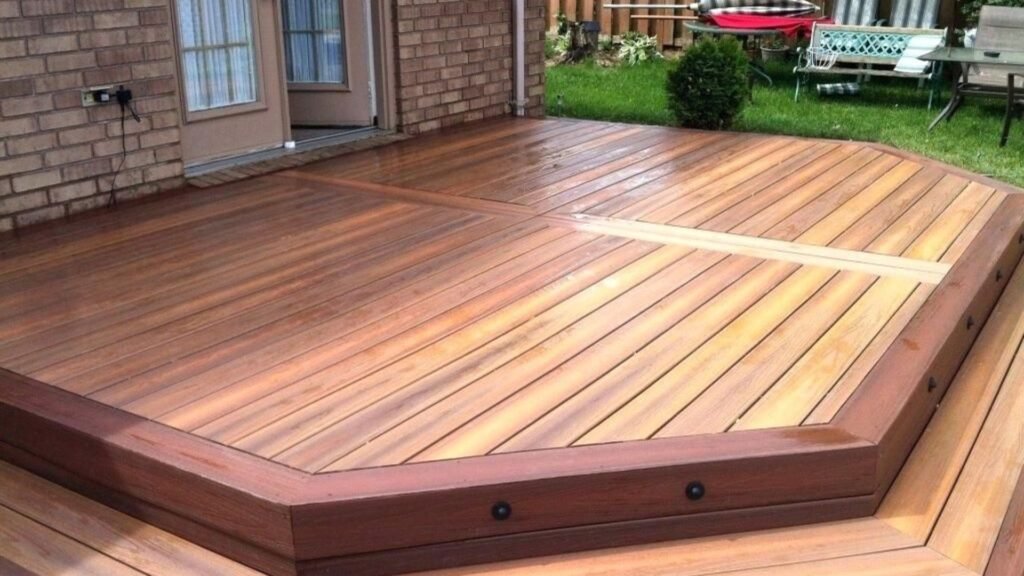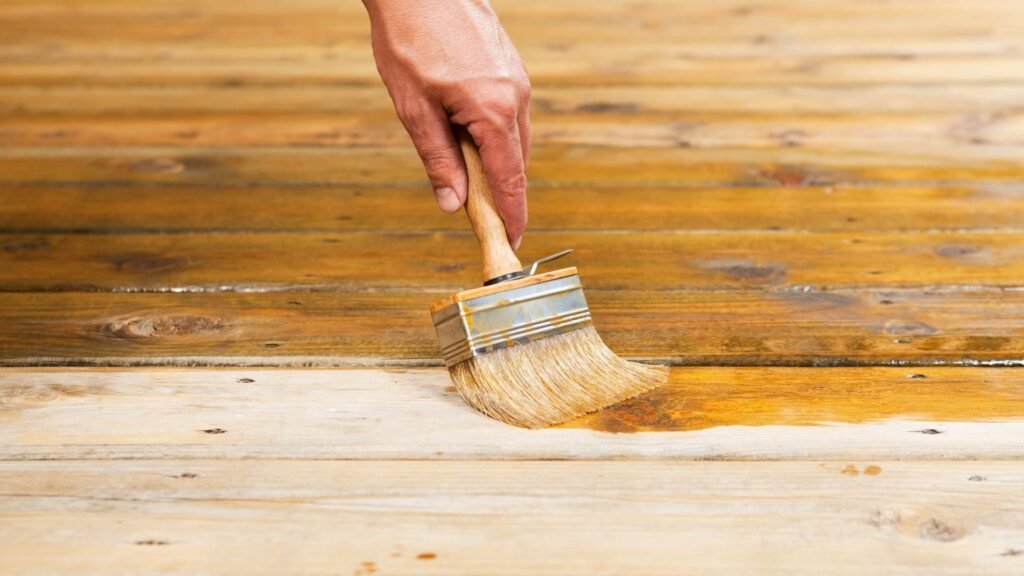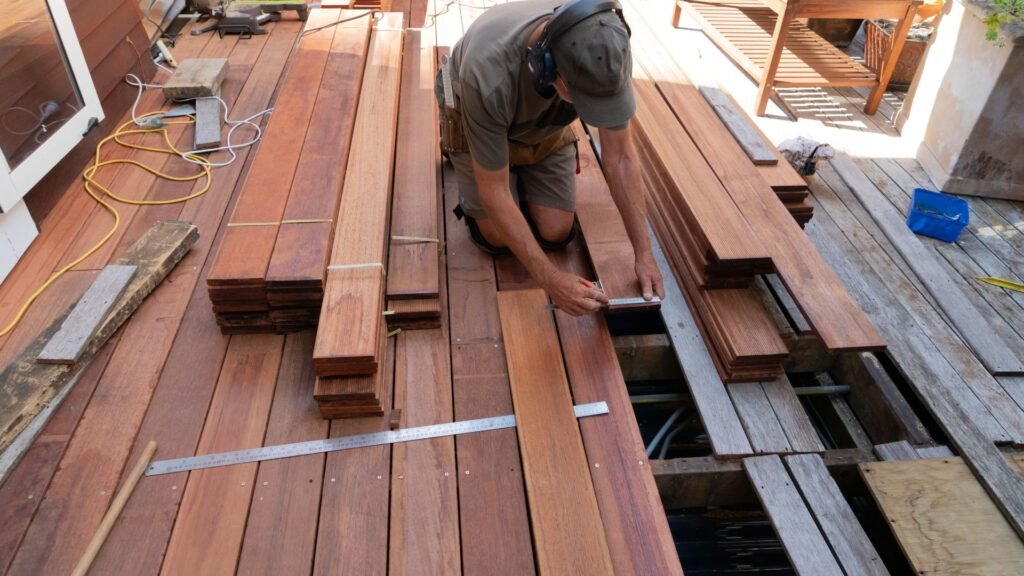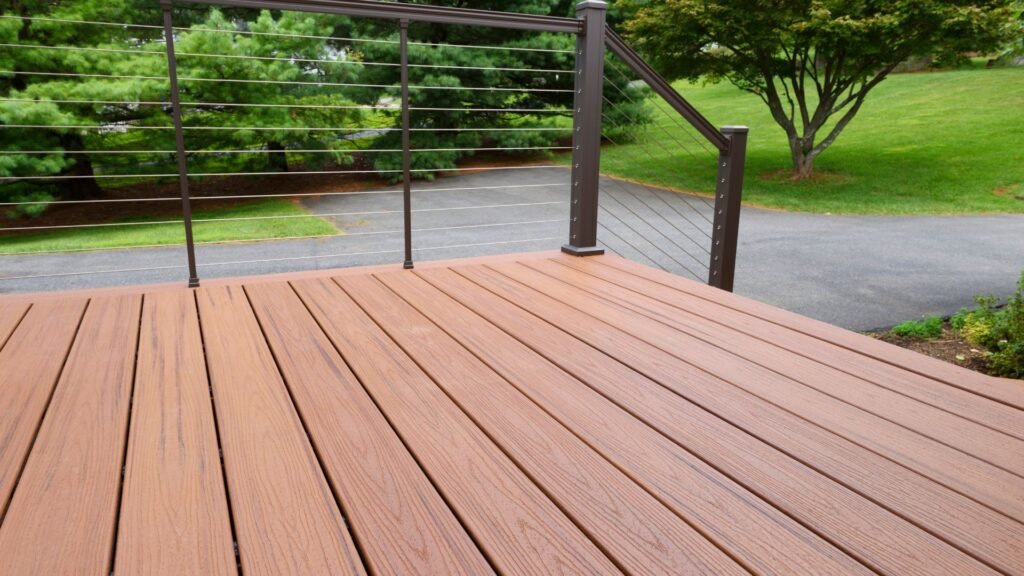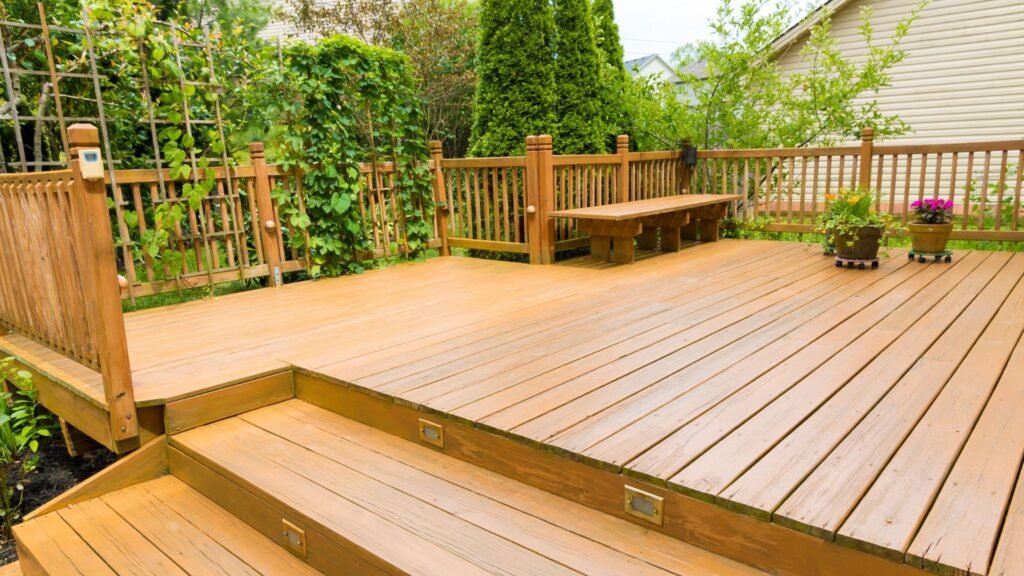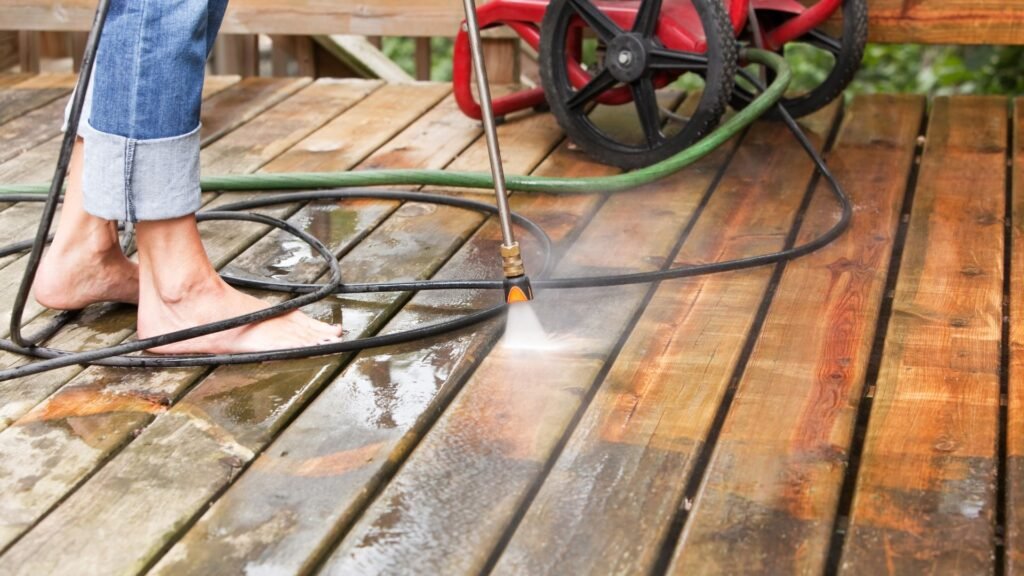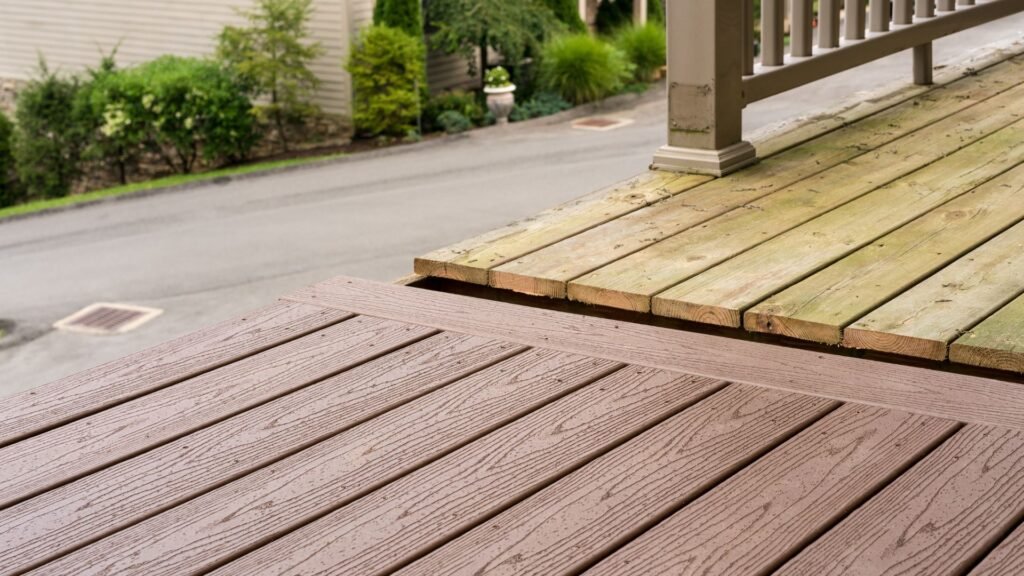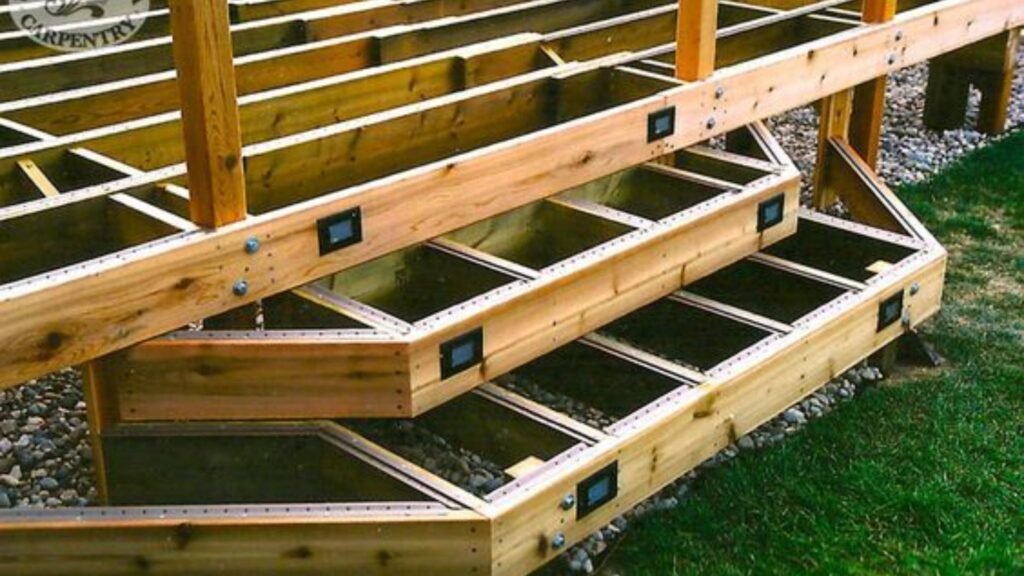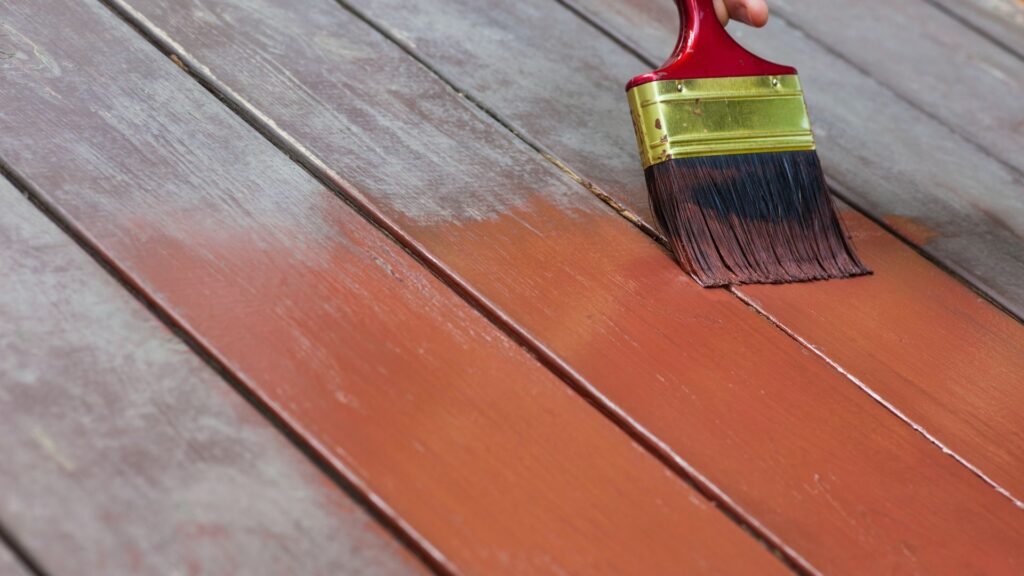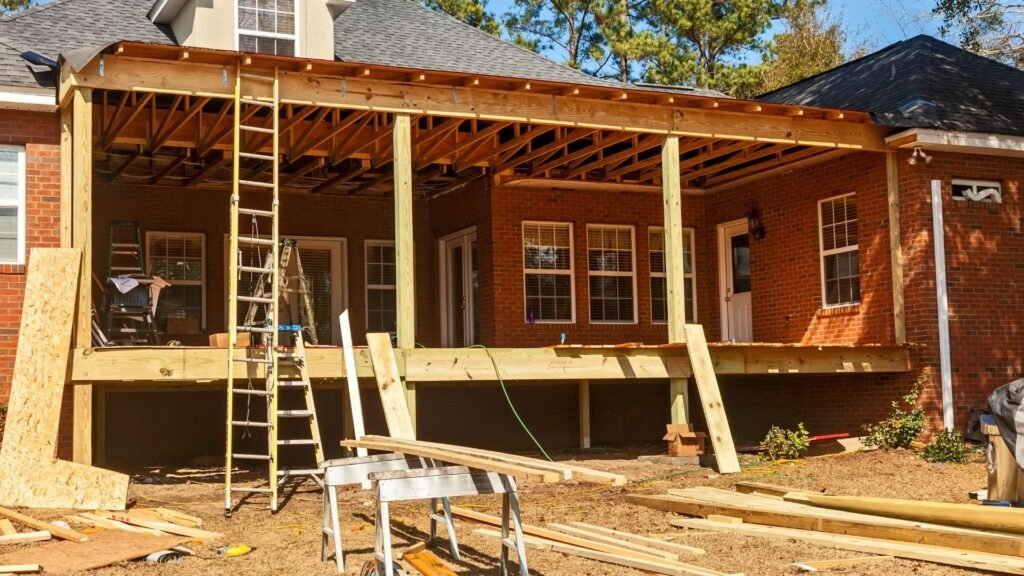Welcome to your complete guide on Kwila decking costs in New Zealand! If you’re considering upgrading your outdoor space with a durable, beautiful, and long-lasting hardwood, Kwila (also known as Merbau) might be the perfect option for you. Known for its rich, reddish-brown color and natural resistance to the elements, Kwila is a popular choice for decking across NZ. In this article, we’ll walk you through everything you need to know about the cost of Kwila decking—from material prices and installation fees to factors that affect the final bill—so you can plan your project with confidence. Whether you’re looking for an affordable solution or ready to invest in premium outdoor living, we’ve got you covered with expert insights and practical tips.
The cost of Kwila decking in New Zealand typically ranges between $80 to $120 per square meter for materials alone. When factoring in installation, labor costs can add another $50 to $90 per hour, depending on the complexity of the project. Additional costs may include fasteners, finishing products, and potential council permits, bringing the total project cost to approximately $300 to $600 per square meter.
Table of Contents
What Is Kwila Decking?
Kwila decking is a popular choice for outdoor decking, particularly in regions like New Zealand. Known for its striking appearance and exceptional durability, Kwila (scientifically referred to as Intsia bijuga) is more commonly known by its trade name, Merbau. It is a hardwood species native to tropical regions, primarily found in Southeast Asia, the Pacific Islands, and northern Australia.
Overview of Kwila Hardwood
Kwila hardwood stands out as a top-tier option for outdoor decking projects, thanks to its natural resilience and aesthetic qualities. The timber’s origins in tropical climates make it particularly well-suited for outdoor applications, where exposure to varying weather conditions is a constant. In New Zealand, where weather patterns can be unpredictable, the toughness of Kwila makes it a great fit for decking.
Key Characteristics of Kwila Hardwood
1. Weather Resistance: Kwila naturally resists harsh weather conditions, including heavy rain, strong UV exposure, and fluctuating temperatures. This makes it perfect for outdoor settings, where it can withstand the elements better than most other types of wood.
2. Durability: One of Kwila’s standout traits is its remarkable durability. It’s a dense, heavy hardwood, which means it has a longer lifespan than many other decking materials. Its natural oils also help protect the wood from cracking, warping, or splitting.
3. Color and Appearance: Kwila’s distinct reddish-brown hue is one of its most attractive qualities. Over time, it naturally darkens, giving it a rich, deep color that adds warmth and elegance to any outdoor space. Its fine grain and texture further enhance its visual appeal, making it a favorite among homeowners and builders alike.
Benefits of Choosing Kwila for Decking
Investing in Kwila decking provides a range of advantages beyond just its striking appearance. From its longevity to its resilience against pests and decay, Kwila offers several key benefits for outdoor decking projects.
1. Long-Lasting Investment
Kwila is renowned for being a long-lasting material, making it an excellent choice for homeowners looking to build a deck that will stand the test of time. Unlike other wood types that may need frequent maintenance or replacement, a Kwila deck can last for decades with proper care. Its durability means you won’t have to worry about replacing boards or dealing with significant wear and tear for many years, making it a sound investment.
2. Aesthetic Appeal and Natural Aging
One of the standout features of Kwila is its ability to age gracefully. While its initial reddish-brown color is already visually appealing, it deepens and becomes richer over time, creating a stunning natural aesthetic. This gradual transformation enhances the overall look of your outdoor space, adding sophistication and warmth. Additionally, if you prefer to maintain the wood’s original color, periodic oiling can help preserve its fresh appearance.
3. Resistance to Termites and Rot
Kwila’s natural oils make it highly resistant to termites, a significant concern for outdoor wooden structures. This resistance means that a Kwila deck is less prone to insect damage compared to softer wood varieties. Additionally, Kwila hardwood is naturally resistant to rot and decay, even in wet or humid environments. This ensures that the decking remains structurally sound and safe, no matter the weather conditions.
Kwila decking is an exceptional choice for anyone looking to build an outdoor deck that is both beautiful and durable. Its natural weather resistance, long lifespan, and aesthetic appeal make it a top option for outdoor spaces in New Zealand. Furthermore, its ability to resist termites and rot ensures that your investment in a Kwila deck will pay off for years to come. Whether you’re renovating an existing deck or building a new one, choosing Kwila hardwood guarantees a robust and stunning outdoor area that enhances the overall value of your property.

Kwila Decking Costs In NZ: A Breakdown
When considering Kwila decking for your outdoor space, it’s essential to have a clear understanding of the associated costs. This guide will provide a detailed breakdown of Kwila decking expenses in New Zealand, covering material costs, installation fees, and additional factors that may influence the overall price. By understanding these factors, you can make an informed decision that balances both your budget and long-term satisfaction.
1. Material Costs
Kwila Decking Price Range
The cost of Kwila decking in New Zealand typically falls between $80 and $120 per square meter. This price range can fluctuate depending on various factors, such as your location and the supplier you choose. Coastal regions or areas with higher demand for hardwood decking might experience slightly elevated prices, while those purchasing in bulk may secure discounts.
Comparison to Other Decking Materials
When comparing Kwila to other popular decking options in New Zealand, such as pine, composite, or other hardwoods, it generally comes with a higher upfront cost. For instance, pine decking can cost as little as $30 to $50 per square meter, while composite decking ranges between $100 and $150 per square meter. Kwila’s higher cost is attributed to its durability, dense structure, and rich color that stands the test of time.
While the upfront investment in Kwila decking is greater, it’s important to highlight that this hardwood is cost-effective in the long run. Its natural resistance to decay, termites, and harsh weather conditions means it requires less frequent replacement or repair compared to softer woods like pine. This durability makes Kwila a valuable long-term investment for homeowners.
2. Installation Costs
Average Labor Costs in New Zealand
Hiring professionals for deck installation in New Zealand will typically cost between $50 and $90 per hour, though some installers may offer project-based pricing depending on the complexity and size of the deck. For a standard deck, you can expect installation costs to range from $3,000 to $7,000, depending on various factors, including labor rates in your region.
Factors Impacting Installation Costs
Several variables can influence the cost of installing a Kwila deck. These include:
- Deck Size: Larger decks naturally require more materials and labor, driving up the total cost.
- Design Complexity: Intricate designs, multiple levels, or additional features like stairs, balustrades, and integrated lighting can significantly raise labor costs.
- Site Preparation: If your yard requires extensive leveling or site prep before the deck can be installed, this will add to the overall expense.
DIY vs. Hiring Professionals
Some homeowners may consider DIY deck installation to save on labor costs, which can result in significant savings. For example, by avoiding labor charges, you could reduce the project cost by several thousand dollars. However, while DIY might save money upfront, it comes with potential risks. Improper installation can lead to safety issues, structural problems, or costly repairs down the line. If you’re working with complex designs or unfamiliar with building codes, it’s usually best to hire a professional.
3. Additional Costs
Decking Screws, Nails, and Fasteners
The cost of fasteners, such as screws and nails, can add up depending on the size of your deck. On average, you might spend $100 to $300 on high-quality fasteners, ensuring your Kwila deck remains secure and stable over time.
Finishing and Staining Costs
To protect and enhance the natural beauty of Kwila wood, it’s essential to apply oils or stains periodically. The cost of decking oils or stains typically ranges from $100 to $300 per project, depending on the brand and the size of your deck. Regular maintenance will help preserve the rich, reddish-brown color of Kwila and prevent weathering, ensuring your deck looks great for years to come.
Permits and Consents
In New Zealand, if your deck is over a certain height or size, you may need to apply for council permits or consents. For instance, decks that are more than 1.5 meters high often require council approval. Permit costs vary depending on your location, but they generally range between $200 and $500. It’s essential to check with your local council before starting your project to avoid any fines or delays.
Kwila decking in New Zealand presents a worthwhile investment for homeowners seeking a long-lasting, visually appealing, and durable outdoor space. While Kwila tends to cost more upfront than other materials like pine, its longevity and natural resilience make it a cost-effective choice in the long run. By factoring in installation, fasteners, and maintenance costs, you can budget effectively for your decking project. Whether you choose to hire a professional or take the DIY route, understanding these costs will ensure you make the best decision for your home.

Factors Influencing Kwila Decking Costs
Kwila decking has become a popular choice for outdoor spaces due to its durability and rich aesthetic appeal. However, the cost of installing a Kwila deck can vary significantly depending on a few key factors. Here, we’ll explore some of the major influences on Kwila decking prices, helping you plan your project effectively and budget accordingly.
1. Deck Size and Design Complexity
One of the most significant factors affecting the cost of a Kwila deck is its size and the complexity of its design. Let’s break this down:
- Deck Size: The larger the deck, the more materials and labor you’ll need. Kwila is a premium timber, so the cost of the wood itself can escalate quickly if you’re covering a vast area. Additionally, larger decks often require more structural support, which can further add to the overall expense.
- Design Complexity: A simple, rectangular deck will naturally cost less than a custom-designed deck with intricate features. For example, multi-level decks, custom shapes, or additional structures like pergolas, built-in seating, or integrated lighting will increase both material and labor costs. These elements require more craftsmanship and time, adding to the project’s complexity.
2. Location and Accessibility
Where your property is located and how easy it is to access the deck area can also play a significant role in the total cost of your Kwila decking project.
- Urban vs. Rural Areas: Decking costs can vary depending on where you live. In urban areas, there is often easier access to skilled labor and materials, which can keep costs more competitive. On the other hand, if you’re in a rural location, shipping materials like Kwila timber can be more expensive, and skilled labor might be harder to find. This can lead to increased prices for both materials and labor.
- Site Conditions: If your property has a sloping landscape or the deck location is difficult to access (such as a backyard with limited entry points), additional costs may arise. Sloping land might require extra work, such as building retaining walls or leveling the area. Inaccessibility could also mean the need for specialized equipment or increased labor, further driving up costs.
3. Seasonality and Market Trends
The time of year you choose to build your Kwila deck and the state of the timber market can have a noticeable impact on your project’s cost.
- Seasonality: In many areas, decking projects are in higher demand during the spring and summer months when outdoor spaces are more frequently used. This increased demand can result in higher prices for both materials and labor. On the other hand, if you plan your project during the off-season (such as fall or winter), you might be able to take advantage of discounted rates. Contractors are often less busy during these times, so they may offer better deals to secure work.
- Global Market Trends: Like many other building materials, the price of Kwila can be influenced by global supply and demand trends. If there’s a shortage of Kwila due to overharvesting, trade restrictions, or environmental concerns, prices can spike. It’s essential to stay aware of these market trends when planning your decking project, as they can affect your overall budget.
Several factors play a role in determining the cost of installing a Kwila deck. From the size and complexity of the design to the location and market conditions, each of these elements can influence the final price. By understanding these variables, you can better plan your project and ensure you get the best value for your investment. Whether you opt for a simple design or a more elaborate outdoor space, keeping these factors in mind will help you manage your budget and make informed decisions.

Kwila Decking Maintenance Costs And Tips
Ongoing Maintenance Costs
Maintaining your Kwila decking is essential to preserving its natural beauty and extending its lifespan. Kwila, known for its rich reddish-brown color and durable properties, does require regular upkeep to prevent weathering and fading. Here’s a breakdown of the costs and steps involved in maintaining a Kwila deck:
1. Oiling the Deck
To retain the deck’s vibrant appearance and protect it from the elements, oiling is recommended at least once a year. The cost of oiling can vary based on the size of your deck, with typical expenses ranging between $50 and $100 annually. This includes purchasing quality deck oil and any necessary application tools such as brushes or rollers. Oiling not only nourishes the wood but also enhances its resistance to moisture and UV damage, preventing premature graying or cracking.
2. Cleaning the Deck
Regular cleaning is another key aspect of maintaining Kwila decking. It is advised to clean the deck at least twice a year, especially after the fall and winter months when dirt and debris accumulate. Using a mild deck cleaner, you can expect to spend around $20 to $50 on cleaning supplies. Avoid using harsh chemicals that can strip the natural oils from the wood, as this can accelerate wear and tear.
Comparison of Kwila Maintenance to Other Decking Materials
When compared to alternative decking materials such as composite or treated pine, Kwila requires a bit more attention. Composite decking, for example, is relatively low-maintenance as it doesn’t need to be oiled or stained, and regular cleaning is usually enough to keep it in good condition. Treated pine, on the other hand, may also require oiling, but it tends to be more susceptible to moisture damage and decay over time. In contrast, Kwila is highly durable and naturally resistant to termites, but regular oiling helps maintain its color and structural integrity. Overall, while Kwila’s upkeep may cost slightly more in terms of time and effort, its longevity and aesthetic appeal often make it a worthwhile investment.
Prolonging the Lifespan of Your Kwila Deck
With proper care, a Kwila deck can last for decades. Below are some key tips to ensure your Kwila decking stays in top shape and resists the natural elements that can cause damage over time.
1. Sealing and Staining to Prevent Fading
Kwila is naturally rich in oils, but exposure to sunlight and rain can lead to fading and discoloration. Sealing your deck with a clear sealant or using a high-quality wood stain can help preserve its color. Sealing adds a protective layer that prevents moisture from penetrating the wood, reducing the likelihood of mold, warping, or splitting. A good deck sealant costs between $30 and $60 per gallon, depending on the brand and quality.
2. Protection from UV Exposure
UV rays can be particularly harsh on wooden decks, causing them to fade and deteriorate over time. Using a UV-protectant oil or finish can help shield your Kwila deck from sun damage. These products typically cost between $40 and $80, depending on the brand and the size of your deck. Regular application, usually once a year, will help maintain the rich color of the wood and prevent it from turning gray.
3. Moisture and General Wear Protection
In addition to UV damage, moisture is another factor that can affect the lifespan of your Kwila deck. To protect against moisture buildup, ensure proper ventilation underneath the deck and clean any debris or leaves that may accumulate. Using water-repellent oils or sealants will also help prevent water from seeping into the wood, which can lead to mold or mildew. Applying these products after cleaning and before the rainy season will provide optimal protection.
4. Recommended Products for Kwila Decking
When choosing products to maintain your Kwila deck, look for natural oils that complement the wood’s inherent qualities. Tung oil, teak oil, and linseed oil are popular choices for Kwila decks, offering deep nourishment and a natural finish. Prices for these oils range from $30 to $70 depending on the brand and quantity. For UV protection, some products combine oils with UV-blocking agents, giving your deck the best of both worlds: nourishment and protection. It’s also worth considering eco-friendly options that are free from harmful chemicals and better for the environment.
In conclusion, while Kwila decking does require regular maintenance, the effort pays off in the form of a stunning, long-lasting outdoor space. By following these maintenance tips and investing in quality products, you’ll not only protect your deck from the elements but also enjoy its natural beauty for years to come.
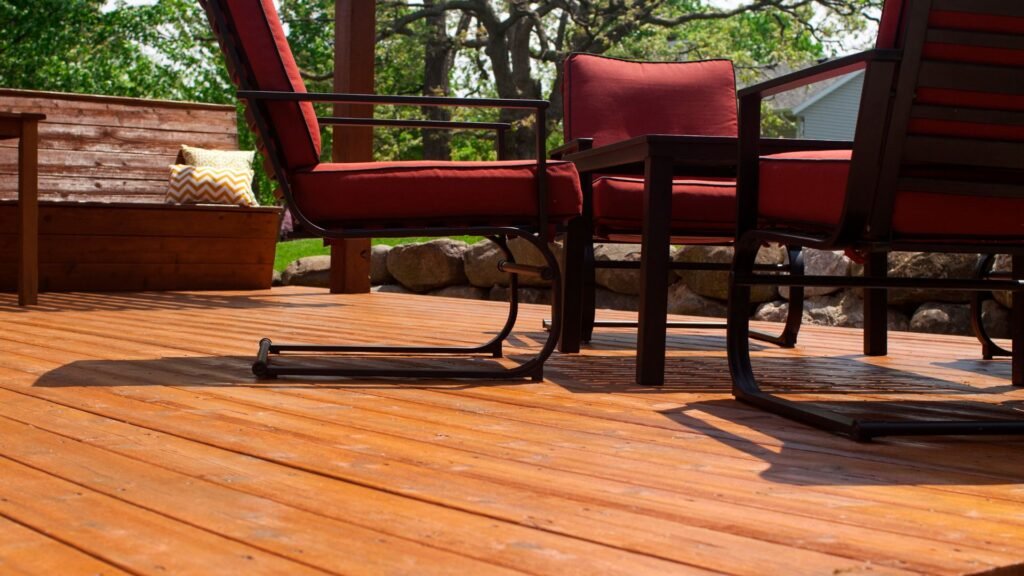
Is Kwila Decking Worth The Investment? (Pros and Cons)
When considering decking options, Kwila is often one of the top choices due to its robust characteristics. But like any investment, it’s important to weigh both the benefits and potential drawbacks. Let’s break down the pros and cons to help you determine if Kwila decking is worth your investment.
Pros of Kwila Decking
1. Long-Term Value: One of the key reasons homeowners and builders choose Kwila is for its durability. This hardwood decking material is known to last for decades, offering significant long-term value. Its rich color and natural beauty can elevate the look of your outdoor space, enhancing the overall aesthetic appeal of your home.
2. High Resistance to Rot and Insects: Kwila is naturally resistant to rot, decay, and insect damage, which makes it ideal for outdoor use, especially in climates that are prone to high moisture or pests. Unlike many softwoods, Kwila can withstand tough environmental conditions without succumbing to damage, reducing the need for constant repairs.
3. Less Frequent Replacement: Softwood decks often need replacement or heavy repairs after just a few years due to weathering or damage. Kwila decking, however, stands the test of time. With proper care, it maintains its structural integrity far longer, meaning fewer replacements and lower long-term costs.
Cons of Kwila Decking
1. Higher Initial Cost: One of the biggest drawbacks of Kwila decking is its upfront price. Compared to softwood and even some other hardwood options, Kwila is more expensive. However, it’s important to balance this higher initial investment with the long-term savings from its durability and low maintenance needs.
2. Maintenance Requirements: Although Kwila is durable, it does require regular maintenance to keep its appearance in top shape. Without periodic oiling or sealing, the wood can fade to a silver-grey color. If you want to maintain that deep, rich hue, you’ll need to dedicate time to treating the wood, which could be a con for those looking for a low-maintenance solution.
3. Environmental Concerns: Sourcing Kwila sustainably is a concern for environmentally conscious consumers. Some Kwila comes from deforested regions, raising questions about the environmental impact. To address this, look for Kwila decking that is certified by organizations like the Forest Stewardship Council (FSC). FSC-certified Kwila ensures the wood is harvested from responsibly managed forests, mitigating the environmental footprint.
Is Kwila Decking Worth the Investment?
If you’re looking for a decking solution that combines beauty, durability, and longevity, Kwila is a strong contender. Yes, the initial cost is higher, but the reduced need for replacements and repairs, coupled with its natural resistance to decay, can offset this over time. However, if you prefer a deck that requires little to no maintenance or you’re concerned about environmental sustainability, it’s worth considering alternatives or ensuring your Kwila is sourced responsibly.
Ultimately, whether Kwila decking is worth the investment depends on your long-term goals for your outdoor space and your budget.
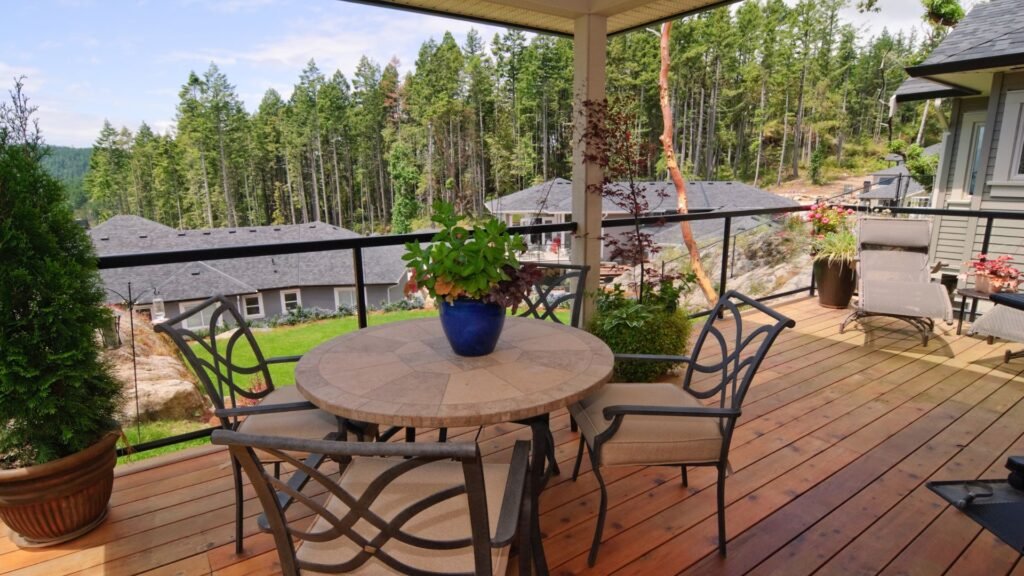
Comparing Kwila Decking With Other Popular Decking Materials In NZ
When it comes to decking in New Zealand, homeowners and builders often face the challenge of choosing the right material. Kwila (also known as Merbau) has gained popularity due to its durability and rich reddish-brown color, but how does it stack up against other common options like pine, composite decking, and other hardwoods? Here’s a detailed comparison to help you make an informed decision.
Kwila vs. Pine Decking
Price Comparison and Durability
Pine decking, specifically treated pine, is one of the most affordable options available in NZ. It’s commonly used because of its lower price point. However, when compared to Kwila, the significant difference lies in durability. Pine, even when treated, is softer than Kwila and is more prone to damage from heavy foot traffic, weather conditions, and pests. Kwila, being a hardwood, naturally offers better resilience and can withstand harsher conditions without showing signs of wear as quickly as pine does.
Maintenance Needs and Lifespan
Pine decking requires regular maintenance to ensure it stays in good condition. It typically needs to be stained or treated annually to prevent rot and decay, especially in the wet climate that many regions in New Zealand experience. On the other hand, Kwila has natural oils that make it more resistant to decay and insect attacks, so it requires less frequent maintenance. With proper care, Kwila decking can last significantly longer—up to 40 years or more—while pine decking may only last around 15-20 years, depending on the level of maintenance and exposure to the elements.
Kwila vs. Composite Decking
Upfront Cost Comparison
Kwila decking has a mid-range price point, whereas composite decking can vary significantly depending on the brand and type. Typically, the upfront cost of composite decking is higher than Kwila. Composite decking is made from a mix of wood fibers and recycled plastic, which drives up its production cost. However, many homeowners opt for composite decking due to its reputation for being a low-maintenance option.
Maintenance Differences and Environmental Considerations
One of the biggest selling points of composite decking is that it requires minimal maintenance. Unlike Kwila, composite decking does not need to be sanded, stained, or treated regularly. It’s resistant to mold, rot, and insect damage, making it a more hands-off option for those looking to minimize upkeep. However, Kwila offers a natural aesthetic that composite often cannot replicate, as many composites can look and feel artificial.
When it comes to environmental considerations, Kwila has a clear advantage in terms of being a natural product. As long as the Kwila is sourced from sustainable plantations, it offers an eco-friendly choice. Composite decking, while made from recycled materials, contains plastics that may not be as environmentally friendly, especially if it eventually ends up in a landfill.
Kwila vs. Other Hardwoods
Price Differences, Pros, and Cons
- Kwila is often compared with other hardwoods like Jarrah and Vitex, both of which are also popular in New Zealand. In terms of price, Kwila tends to be more affordable than Jarrah but more expensive than Vitex.
- Jarrah is a highly durable hardwood with a deep red color similar to Kwila, but it typically comes with a higher price tag. Both Jarrah and Kwila are excellent choices for those who prioritize longevity and resistance to the elements. Vitex, on the other hand, is a lighter hardwood that offers a more subtle appearance, but it’s not as dense or durable as Kwila or Jarrah, which might result in a shorter lifespan and increased maintenance needs over time.
Pros and Cons Summary
- Kwila: Durable, rich in color, resistant to rot and pests, mid-range pricing.
- Jarrah: Extremely durable, premium quality, more expensive, similar in color to Kwila.
- Vitex: Lighter color, less dense, lower price, but may require more maintenance.
In conclusion, each decking material has its own strengths and weaknesses. Kwila offers a balanced combination of durability, aesthetic appeal, and mid-range pricing, making it a strong contender for many New Zealand homeowners. Pine is a budget-friendly option but falls short in terms of lifespan and durability. Composite decking, while low-maintenance, may lack the natural look of Kwila and raise environmental concerns. Other hardwoods like Jarrah and Vitex offer alternatives, with varying price points and durability levels.
By considering factors such as upfront cost, maintenance, environmental impact, and the overall look you want to achieve, you can choose the decking material that best suits your needs and the unique conditions of New Zealand’s climate.
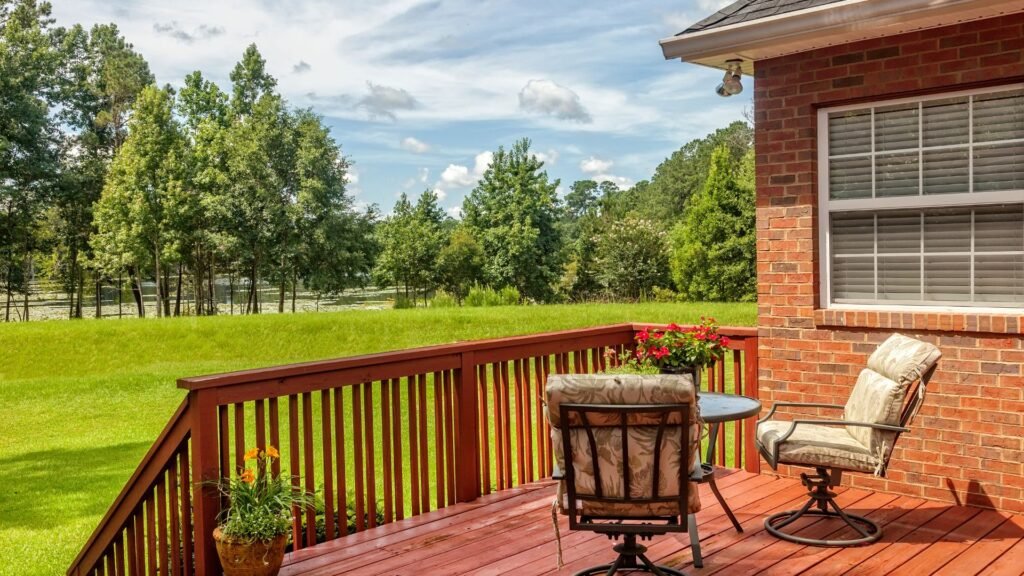
How To Save On Kwila Decking Costs
When considering Kwila decking for your outdoor space, you might be concerned about the potential costs. While Kwila is a premium timber known for its durability and beauty, there are several strategies you can employ to reduce your overall expenses without compromising quality. Below are some tips on how you can save on Kwila decking costs while still getting the best value for your investment.
1. Bulk Buying
One of the most effective ways to save on Kwila decking costs is by purchasing the timber in bulk. Many suppliers offer discounts for larger orders, so if you’re working on a bigger project, this can be an excellent way to reduce the price per meter. Additionally, sourcing directly from wholesalers or timber mills can help you avoid the markups that come from middlemen or retail outlets.
Before making a large purchase, it’s wise to measure your project carefully and consult with your supplier to ensure you’re ordering the correct amount. Buying in bulk not only reduces costs but also ensures you have enough material on hand to complete your deck without delays or shortages.
2. Off-Season Discounts
Another way to cut costs is by purchasing and installing your Kwila decking during off-peak seasons. Typically, decking materials and contractor services are in higher demand during spring and summer, which can drive up prices. However, during fall and winter, suppliers and contractors often lower their rates due to decreased demand.
By planning your project for the off-season, you might not only find better deals on Kwila timber but also have more flexibility in scheduling with contractors who have fewer projects lined up. This can result in both material savings and reduced labor costs, giving you a win-win scenario.
3. DIY Projects
Opting for a DIY approach can significantly reduce the labor costs associated with Kwila decking, but it’s important to recognize that this hardwood is dense and requires precision when working with it. If you have experience with woodworking or decking, certain aspects of the project might be suitable for a DIY approach. For example, you could handle tasks like:
- Preparing the site, including leveling and clearing
- Installing the subframe or base structure
- Basic cutting and measuring of timber planks
However, because Kwila is known for its hardness and high density, tasks like accurate cutting, fastening, and sealing should ideally be left to professionals. Mistakes in these areas can lead to costly repairs or replacements down the road. Additionally, specialized tools may be required to handle Kwila effectively, so factor that into your decision before committing to a full DIY project.
By combining bulk buying, off-season shopping, and selective DIY efforts, you can save significantly on Kwila decking costs while still enjoying a high-quality and long-lasting deck.
If you’re looking for competitive pricing and expert advice on Kwila decking materials, you can check out One Stop Deck Shop for more details on sizes, grades, and sustainable sourcing options.

FAQs: About Kwila Decking Cost NZ
How much does Kwila decking cost in New Zealand per square meter?
Kwila decking costs in New Zealand typically range from $80 to $120 per square meter for materials. The final cost depends on factors such as supplier pricing, region, and the grade of the timber.
What is the average cost to install Kwila decking?
The average installation cost for Kwila decking in New Zealand is around $50 to $90 per hour for labor. Total installation costs vary depending on the size of the deck and the complexity of the design but generally range from $300 to $600 per square meter, including materials and labor.
Is Kwila decking worth the investment?
Yes, Kwila decking is worth the investment for many homeowners due to its durability, natural resistance to rot and termites, and its rich aesthetic appeal. While the initial cost is higher than other materials, Kwila’s longevity and low maintenance requirements can make it cost-effective over time.
How long does Kwila decking last?
With proper maintenance, Kwila decking can last 25 to 50 years. Regular care, such as oiling and sealing, will help protect the wood from the elements and prolong its lifespan.
How often does Kwila decking need to be maintained?
Kwila decking typically requires oiling once or twice a year to maintain its color and protect it from weathering. Regular cleaning to remove dirt and debris is also recommended. Applying UV protectants can further extend the life and appearance of the deck.
Can I install Kwila decking myself?
Yes, Kwila decking can be installed as a DIY project if you have the right tools and skills. However, Kwila is a dense hardwood, making it more challenging to work with compared to softer woods like pine. Professional installation is recommended for complex designs or larger projects to ensure quality and durability.
What factors influence the cost of Kwila decking?
Several factors can influence the cost of Kwila decking, including the size and design of the deck, the location of the project, accessibility of the site, and market conditions. Additional costs can also arise from the need for finishing products, permits, or specialized features like stairs and balustrades.
How does Kwila decking compare to other decking materials?
Kwila decking is more expensive than treated pine and composite decking but offers superior durability, resistance to weather, and a rich, natural appearance. Compared to other hardwoods, Kwila is competitively priced and offers a good balance of longevity and aesthetics.
Is Kwila decking environmentally friendly?
Kwila can be environmentally friendly if sourced from sustainably managed forests. Look for suppliers that offer Kwila certified by the Forest Stewardship Council (FSC) or other reputable sustainability certifications to ensure responsible sourcing.
Does Kwila decking fade over time?
Yes, Kwila decking can fade to a silvery-grey color over time if left untreated. To maintain its rich reddish-brown hue, regular oiling and UV protectant applications are recommended. If you prefer the weathered look, you can opt to leave it untreated, but maintenance will still be required to protect it from the elements.
Conclusion
In conclusion, when considering Kwila decking, it’s essential to weigh the upfront costs against the long-term value it provides. Kwila is known for its durability, natural beauty, and ability to withstand New Zealand’s climate, making it a smart choice for homeowners looking to enhance their outdoor spaces. Although the initial investment may be higher than other decking materials, the longevity and minimal maintenance of Kwila offer great value over time. To maximize your investment, be sure to source a detailed quote from local suppliers and consult with a decking professional to plan a project that meets your needs. Ultimately, Kwila decking is a premium option that combines aesthetic appeal with lasting performance, ensuring your outdoor area remains stunning for years to come.
About the Author:
Mike Veail is a recognized digital marketing expert with over 6 years of experience in helping tradespeople and small businesses thrive online. A former quantity surveyor, Mike combines deep industry knowledge with hands-on expertise in SEO and Google Ads. His marketing strategies are tailored to the specific needs of the trades sector, helping businesses increase visibility and generate more leads through proven, ethical methods.
Mike has successfully partnered with numerous companies, establishing a track record of delivering measurable results. His work has been featured across various platforms that showcase his expertise in lead generation and online marketing for the trades sector.
Learn more about Mike's experience and services at https://theleadguy.online or follow him on social media:

